Related Research Articles

General Sir Ian Standish Monteith Hamilton, was a senior British Army officer who had an extensive British Imperial military career in the Victorian and Edwardian eras. Hamilton was twice recommended for the Victoria Cross, but on the first occasion was considered too young, and on the second too senior. He was wounded in action at the Battle of Majuba during the First Boer War, which rendered his left hand permanently injured. Near the end of his career, he commanded the Mediterranean Expeditionary Force in the Gallipoli Campaign of the First World War.
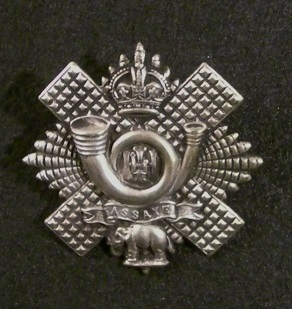
The Highland Light Infantry (HLI) was a light infantry regiment of the British Army formed in 1881. It took part in the First and Second World Wars, until it was amalgamated with the Royal Scots Fusiliers in 1959 to form the Royal Highland Fusiliers which later merged with the Royal Scots Borderers, the Black Watch, the Highlanders and the Argyll and Sutherland Highlanders to form the Royal Regiment of Scotland, becoming the 2nd Battalion of the new regiment.

The Gordon Highlanders was a line infantry regiment of the British Army that existed for 113 years, from 1881 until 1994, when it was amalgamated with The Queen's Own Highlanders to form The Highlanders. Although the 'Gordon Highlanders' had existed as the 92nd Regiment of Foot since 1794, the actual 'Gordon Highlanders Regiment' was formed in 1881 by amalgamation of the 75th (Stirlingshire) Regiment of Foot and 92nd Regiment of Foot.
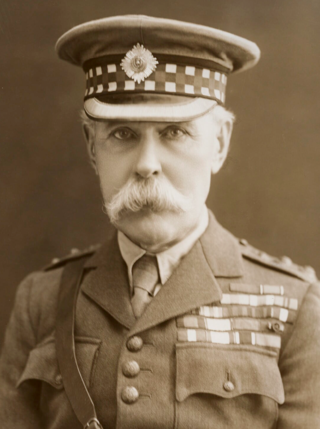
Field Marshal Paul Sanford Methuen, 3rd Baron Methuen,, was a British Army officer. He served in the Third Anglo-Ashanti War in 1873 and then in the expedition of Sir Charles Warren to Bechuanaland in the mid-1880s. He took a prominent role as General Officer Commanding the 1st Division in the Second Boer War. He suffered a serious defeat at the Battle of Magersfontein, during which he failed to carry out adequate reconnaissance and accordingly his artillery bombarded the wrong place leading to the Highland Brigade taking heavy casualties. He was later captured by the Boers at Tweebosch. After the war, he became General Officer Commanding-in-Chief in South Africa in 1908, Governor and Commander-in-Chief of Natal in 1910 and then Governor and Commander-in-Chief of Malta in 1915.
Major-General Sir Colin John Mackenzie was a British soldier and Chief of the General Staff, the head of the Canadian Militia, from 1910 until 1913.

Lieutenant General Sir Frederick William Stopford, was a British Army officer, best remembered for commanding the landing at Suvla Bay in August 1915, during the Gallipoli Campaign, where he failed to order an aggressive exploitation of the initially successful landings.
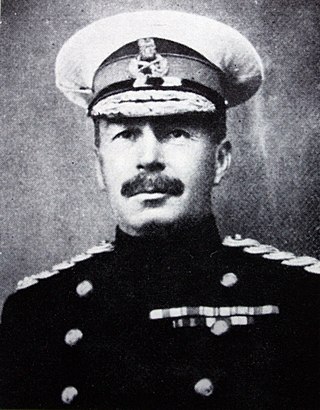
Major-General Sir Henry Timson Lukin was a South African military commander. He fought in the Anglo-Zulu War (1879) and the Basutoland Gun War (1880–1881), the Bechuanaland Campaign (1897), and the Anglo-Boer War when he was in command of the artillery during the defence of Wepener for which action he was awarded a Distinguished Service Order. From 1900 to 1901 he commanded the Cape Mounted Riflemen, from 1904 to 1912 he was Commandant-General of the Cape Colonial Forces and in 1912 Inspector-General of the Permanent Force of the Union of South Africa.
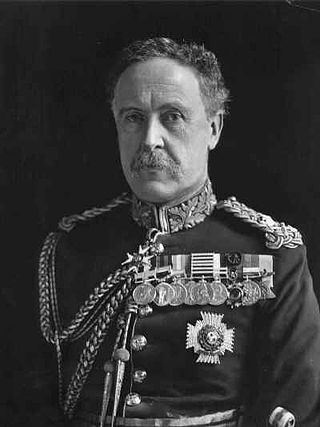
General The Honourable Sir Neville Gerald Lyttelton, was a British Army officer from the Lyttelton family who served against the Fenian Raids, and in the Anglo-Egyptian War, the Mahdist War and the Second Boer War. He was Chief of the General Staff at the time of the Haldane Reforms and then became Commander-in-Chief, Ireland.

General Sir Hugh Charles Stockwell, was a senior British Army officer most remembered for commanding the Anglo-French ground forces during the Suez Crisis and his service as Deputy Supreme Allied Commander Europe of NATO from 1960 to 1964.
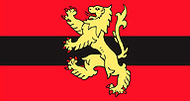
Scottish Command or Army Headquarters Scotland is a command of the British Army.
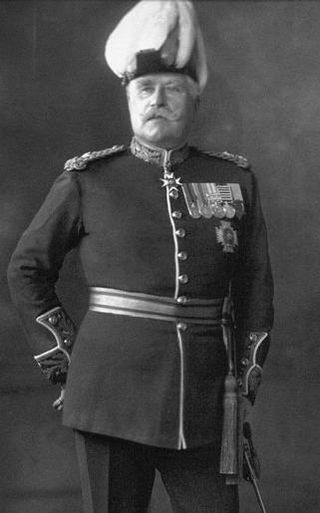
Lieutenant-General Sir William Pitcairn Campbell, was a British Army General during the First World War.
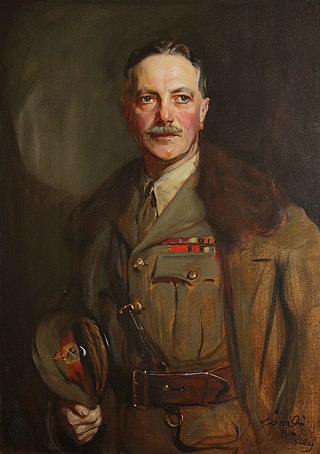
General Sir Robert Dundas Whigham, was a Scottish British Army officer who served as Adjutant-General to the Forces.

Major-General Sir Gerald Farrell Boyd was a senior British Army officer who went on to be Military Secretary.
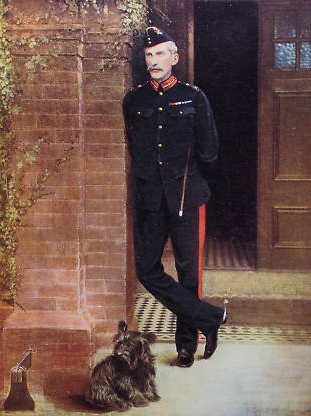
General Sir Henry John Thoroton Hildyard was a British Army officer who saw active service in the Anglo-Egyptian War of 1882 and the Second Boer War. He was General Officer Commanding-in-Chief, South Africa, from 1905 to 1908.
The 64th Division was an infantry division of the British Army, raised during the Great War. The division was formed in late 1914 as a second-line Territorial Force formation which served on home defence duties throughout the war.
Major General The Honourable Sir Frederick Gordon, was a senior British Army officer, who additionally served as a major general in the early Royal Air Force.
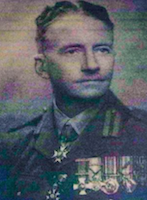
Clifton Inglis Stockwell was a British soldier who served as Brigadier-General of the 164th Infantry Brigade of the British Army between 1916 and 1919.
Major General Sir Richard Bannatine-Allason was a senior British Army officer.

Major-General Francis Seymour Inglefield (1855–1930) was a British Army officer.
Major-General Sir Andrew Jameson McCulloch was a senior British Army officer.
References
- 1 2 "Stockwell, George Clifton Inglis". Anglo-Boer War. Retrieved 2 December 2023.
- ↑ "No. 25158". The London Gazette . 20 October 1882. p. 4694.
- ↑ "Senior British Army Appointments" (PDF). Retrieved 2 December 2023.
- ↑ Becke, Archibald Frank (1935). Order of Battle of Divisions. H. M. Stationery Office.
- ↑ "No. 11421". The Edinburgh Gazette . 27 June 1902. p. 650.